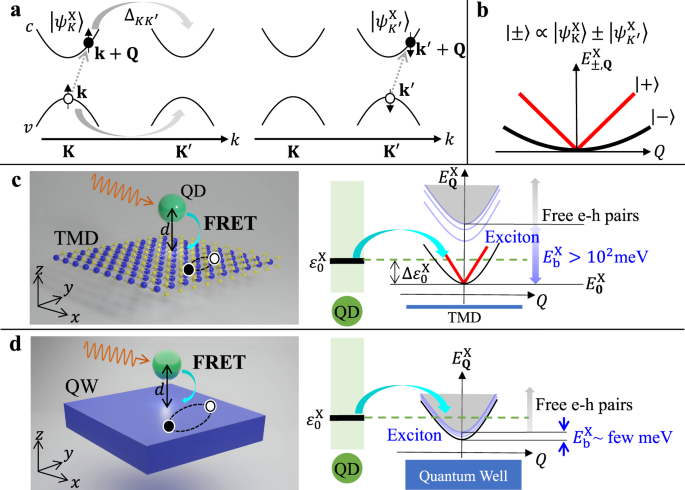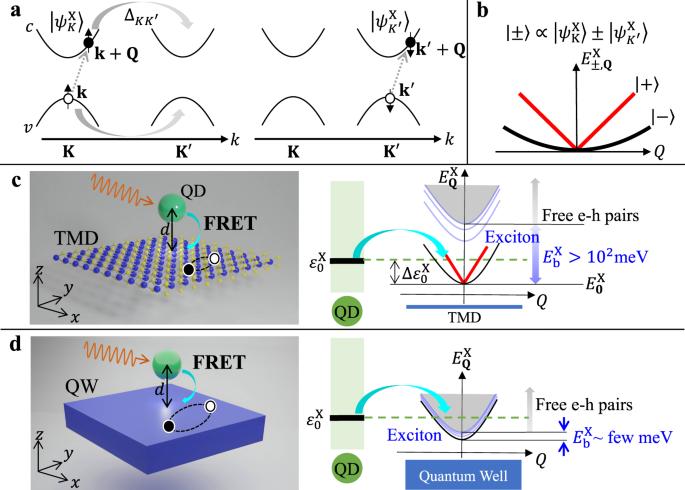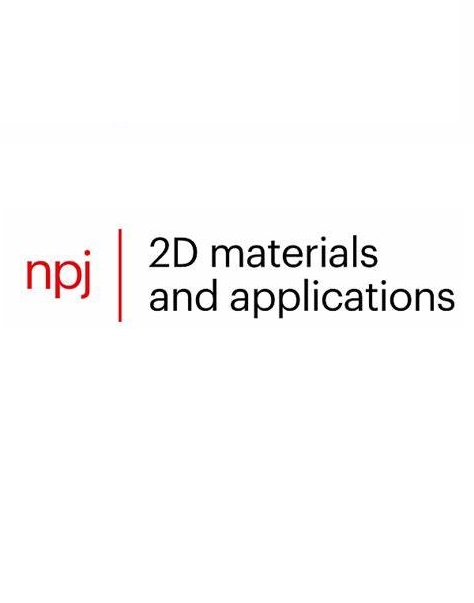动量禁止暗激子在单层过渡金属二硫族化合物能量转移响应中的重要作用
IF 9.1
2区 材料科学
Q1 MATERIALS SCIENCE, MULTIDISCIPLINARY
引用次数: 0
摘要
我们在第一原理计算的激子精细结构的基础上,通过量子理论实现了从光激发量子点(QD's)到过渡金属二卤化物单层(TMD-ML's)的激子介导的佛斯特共振能量转移(FRET)的理论研究。随着电子-空穴库仑相互作用的增强,原子级薄的 TMD-ML 被证明可以作为纯粹由激子介导的 FRET 的特殊平台,并充分利用其卓越的激子特性。值得注意的是,原子级薄 TMD-ML 的能量转移反应是由动量禁止的暗激子而不是通常公认的亮激子决定的。具体地说,纵向暗激子态遵循交换驱动的类光线性带色散,在提高 TMD-ML 的 FRET 效率和稳健性以对抗 QD-载体组合的不均匀性方面发挥了关键作用。由于暗激子的重要参与,TMD-ML 的 FRET 响应不再遵循经典预测的距离幂律,尤其是无法体现供体-受体系统的维度。本文章由计算机程序翻译,如有差异,请以英文原文为准。


Essential role of momentum-forbidden dark excitons in the energy transfer responses of monolayer transition-metal dichalcogenides
We present a theoretical investigation of exciton-mediated Förster resonant energy transfers (FRET’s) from photoexcited quantum dots (QD’s) to transition-metal dichalcogenide monolayers (TMD-ML’s), implemented by the quantum theory of FRET on the base of first-principles-calculated exciton fine structures. With the enhanced electron-hole Coulomb interactions, atomically thin TMD-MLs are shown to serve as an exceptional platform for FRET that are mediated purely by excitons and take full advantage of the superior excitonic properties. Remarkably, the energy-transfer responses of atomically thin TMD-ML’s are shown to be dictated by the momentum-forbidden dark excitons rather than the commonly recognized bright ones. Specifically, the longitudinal dark exciton states following the exchange-driven light-like linear band dispersion play a key role in grading up the efficiency and robustness of FRET of TMD-ML against the inhomogeneity of QD-donor ensembles. With the essential involvement of dark excitons, the FRET responses of TMD-ML’s no longer follow the distance power law as classically predicted and, notably, cannot manifest the dimensionality of the donor-acceptor system.
求助全文
通过发布文献求助,成功后即可免费获取论文全文。
去求助
来源期刊

npj 2D Materials and Applications
Engineering-Mechanics of Materials
CiteScore
14.50
自引率
2.10%
发文量
80
审稿时长
15 weeks
期刊介绍:
npj 2D Materials and Applications publishes papers on the fundamental behavior, synthesis, properties and applications of existing and emerging 2D materials. By selecting papers with the potential for impact, the journal aims to facilitate the transfer of the research of 2D materials into wide-ranging applications.
 求助内容:
求助内容: 应助结果提醒方式:
应助结果提醒方式:


